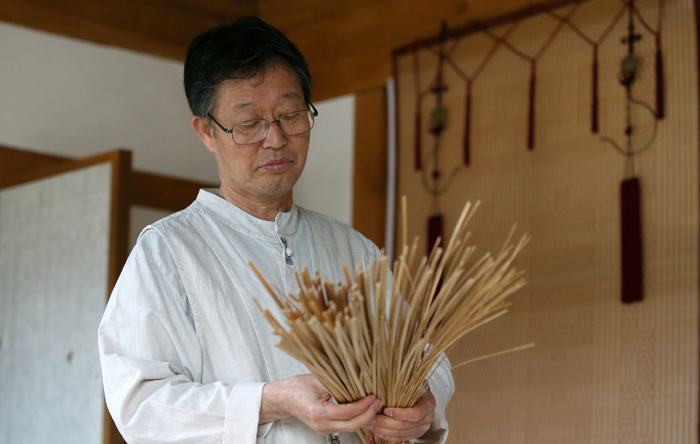
Cho Dae-yong's family has been weaving traditional window blinds out of bamboo and reeds for four generations in Tongyeong, Gyeongsangnam-do.
"My family has been in this line of work for four generations, turning bamboo and reeds into works of art through months of handiwork. I, myself, go out into the bamboo forest and cut the wood to make these works of art.”
Master Cho Dae-yong's family has been crafting traditional window blinds for four generations, finely cutting the bamboo or reeds and tying them together with a thin thread, in Tongyeong, a southern coastal city of Gyeongsangnam-do (South Gyeongsang Province).
“I am sure that no other window blinds made in any other region or even other country are as sophisticated as the traditional blinds being produced here in Tongyeong,” Cho said.
“I produce these by elaborately splitting the bamboo and reeds into thin lengths and then weaving them together with dyed threads whose colors make patterns or letters. It’s such a fine handiwork,” the master added.
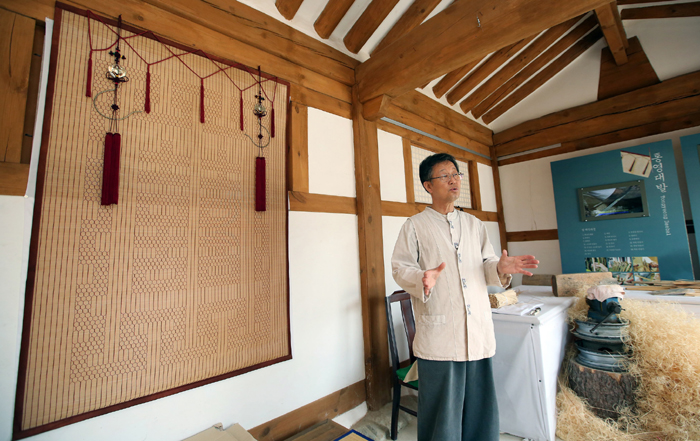
Bamboo window blinds master Cho Dae-yong says that bamboo blinds should be left out in the sun for at least one hour per day to make them long-lasting, as they are vulnerable to moisture. He also notes that in winter, they should be kept wrapped in newspaper or in traditional mulberry tree paper.
Cho is one of the few masters who has kept alive the tradition of the city's "12 gongbang." A gongbang was a craftsman's workshop that existed during Joseon times (1392-1910). Their existence started when the Tongyeong Samdo Sugun Tongjeyeong, a military district that served as the central naval station for the three provinces of Gyeongsang, Jeolla and Chungcheong, was established in the port city in 1604.
As the military bases moved into the city during the Japanese invasions of Korea between 1592 and 1598, many craftsmen who specialized in producing a range of military materials settled in the small city. A total of 12 workshops for such craftsmen took form in the central neighborhood of the city.
Each workshop is occupied by a craftsman armed with a specific handicraft skill set. They not only produced military supplies, but also started creating everyday items, such as traditional hats, boxes woven out of willow or bamboo strips, wooden furniture and gold and silver accessories. The 12 craftsmen flourished and lasted until 1895 when the military district ceased operations.
As part of efforts to keep the Joseon-era craftsmen tradition alive, in January last year the city restored the workshops as they existed during Joseon times centered on the still-standing Sebyeonggwan building, the main administrative building for the medieval naval base.
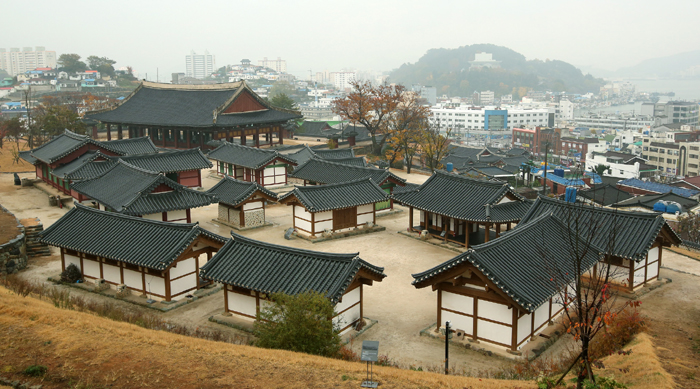
The 12 traditional craftsmen workshops from Joseon times are restored in January 2013 adjacent to the Sebyeonggwan building in Tongyeong, Gyeongsangnam-do.
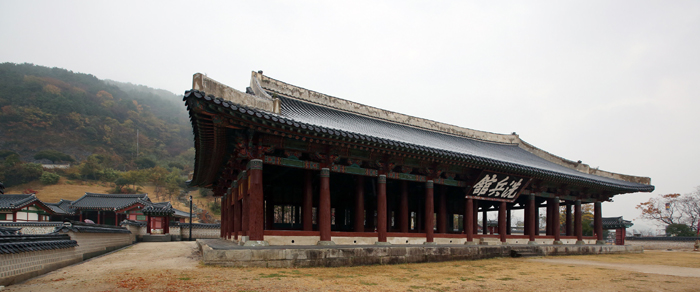
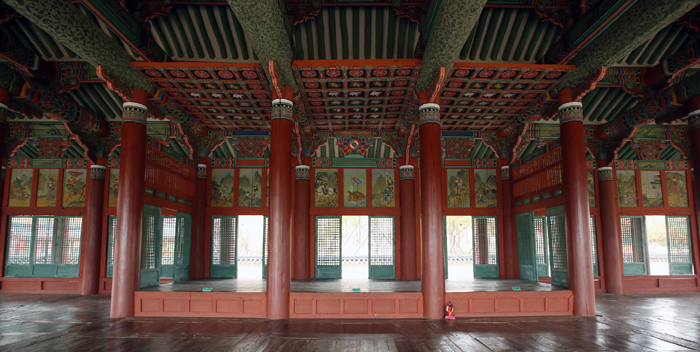
The Sebyeonggwan Hall, the main building of the medieval naval base, still exists in Tongyeong, Gyeongsangnam-do.
In the restored workshops, handicraft masters who inherited their skills through generations gather and continue on their families' traditions. From March to October this year, they showed off their handicraft techniques to the site's many visitors. Some visitors were allowed to take part in the crafting process, along with the masters.
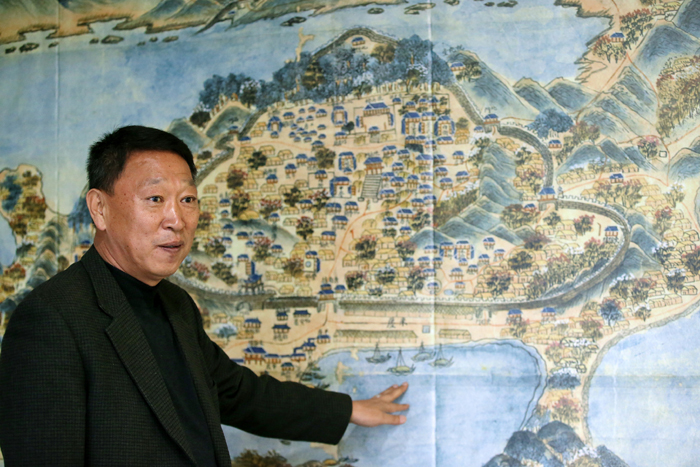
Director Yu Ki-nam of the Tongyeong Tourism Development Corporation tells the story of the 12 traditional workshops.
"Since opening their doors, the traditional workshops have attracted a growing number of visitors, from both home and abroad, especially from China," said Director Yu Ki-nam of the Tongyeong Tourism Development Corporation.
"There are not many places where master craftsmen can come to demonstrate their skills in person and tell the history and stories behind their arts. Many people who come here are very surprised to see the masters elaborately and skillfully inlaying mother-of-pearl -- from abalone shells that were caught right off shore here in the city -- into great pieces of lacquerware, or seeing them weave horsehair into a traditional hat,” the director added.
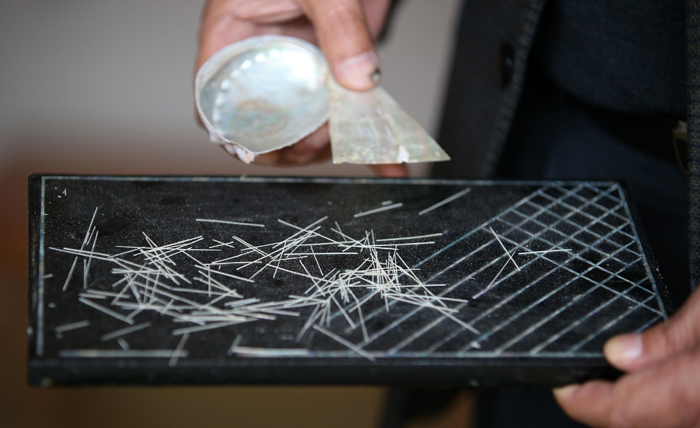
A master turns hair-like thin mother-of-pearl strips, made from abalone shells caught just offshore, into works of art at one of the 12 restored traditional workshops in Tongyeong, Gyeongsangnam-do.
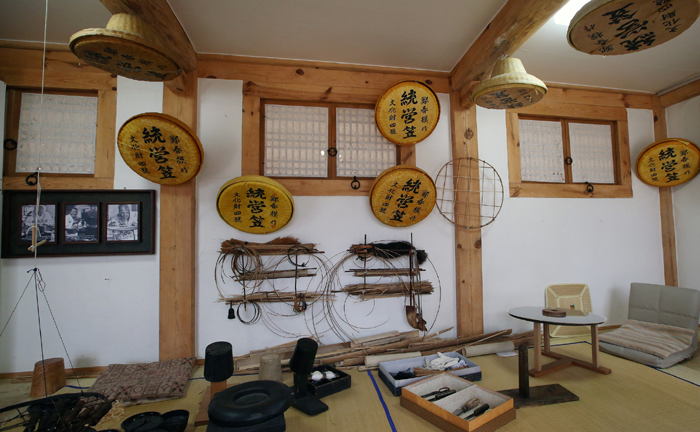
The 12 restored traditional workshops for handicraft masters are nestled around the main Sebyeonggwan building in Tongyeong. Each has on display a range of craftworks.
By Sohn JiAe
Korea.net Staff Writer
Photos: Jeon Han
jiae5853@korea.kr